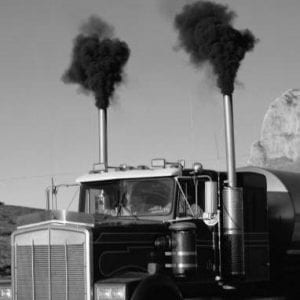 Diesel engine exhaust (DEE) is one of the most prevalent occupational exposures in Canada, with approximately 897,000 Canadians exposed at work. It is a known human carcinogen, according to the International Agency for Research on Cancer (IARC), with links to lung cancer (sufficient evidence) and bladder cancer (limited evidence). According to the Burden of Occupational Cancer Study, workplace DEE exposure is responsible for approximately 560 lung cancers and possibly 200 suspected bladder cancers, with new diagnoses costing approximately $684 million per year.
Diesel engine exhaust (DEE) is one of the most prevalent occupational exposures in Canada, with approximately 897,000 Canadians exposed at work. It is a known human carcinogen, according to the International Agency for Research on Cancer (IARC), with links to lung cancer (sufficient evidence) and bladder cancer (limited evidence). According to the Burden of Occupational Cancer Study, workplace DEE exposure is responsible for approximately 560 lung cancers and possibly 200 suspected bladder cancers, with new diagnoses costing approximately $684 million per year.
Current scientific evidence supports the need for a more protective occupational exposure limit (OEL) for DEE in Canada. In order to better understand the regulatory landscape for occupational DEE exposure in Canada and identify key barriers and facilitators to setting and complying with OELs, our team conducted interviews with key informants and an environmental scan of OELs for DEE. The results are presented in the new report, “Setting an Occupational Exposure Limit for Diesel Engine Exhaust in Canada: Challenges and Opportunities”.
With the exception of the mining industry, our results show that few jurisdictions in Canada have an OEL for DEE, and none have adopted an OEL that reflects the current state of knowledge. OELs exist for various components of DEE (e.g., carbon monoxide, oxides of nitrogen), but there is a regulatory gap for limiting exposure to the carcinogenic fraction, which is mainly found in the particulate matter.
Table 1: Adopted or recommended OELs for DEE in Canada
| Jurisdiction |
OEL |
Marker of exposure |
Notes/Policy instrument reference |
| CAN |
8-hr TWA: 1.5 mg/m3 |
Respirable combustible dust |
|
| BC |
8-hr TWA: 1.5 mg/m3 |
Respirable combustible dust |
Applies to mines and to to any underground working which is not a mine within the meaning of the Mines Act. |
| SK |
8-hr TWA: 0.16 mg/m3 |
Total carbon |
Applies to mines, as defined by the Mines Regulations, 2018. |
| ON |
8-hr TWA: 0.4 mg/m3 |
Total carbon |
Current OEL; applies to all mines, mining plants, and mining development in Ontario. Method: NIOSH 5040. |
| 8-hr TWA: 0.16 mg/m3 |
Total carbon; respirable dust |
Proposed OEL. Would apply to workplaces in which Regulation 833 applies. Method: NIOSH 5040. |
| QC |
8-hr TWA: 0.4 mg/m3 |
Total carbon |
Applies to a mine, as defined by the mining OHS regulations. Method: NIOSH 5040. |
| NL |
8-hr TWA: 0.4 mg/m3 |
Total carbon |
Applies to underground mines. Measured as per NIOSH Method 5040. |
| NB |
8-hr TWA: 1.5 mg/m3 |
Respirable combustible dust |
Applies to underground mines. |
| NS |
8-hr TWA: 1.5 mg/m3 |
Respirable combustible dust |
Applies to non-coal mines. |
| YK |
8-hr TWA: 1.5 mg/m3 |
Respirable combustible dust |
Applies to mines, as defined under the OSH regulations. |
| NWT |
8-hr TWA: 1.5 mg/m3 |
Respirable combustible dust |
Applies to mines. |
| NU |
8-hr TWA: 1.5 mg/m3 |
Respirable combustible dust |
Applies to mines. |
Diesel engine exhaust contains up to 1,800 chemicals, making it a complex mixture that is challenging to monitor. However, elemental carbon has emerged as the best surrogate for measuring diesel exhaust particulate and several international jurisdictions have proposed or adopted OELs based on measurement of elemental carbon, including Switzerland, Germany, and Austria (see report for more details).
The interviewees identified several key challenges to developing and implementing a DEE OEL, including:
- Perceived scientific uncertainty and a lack of consensus about the best marker of exposure
- The slow pace of regulatory change
- Resistance of employers at the perceived costs of implementation
- The uneven occupational health and safety landscape that exists within Canada
- The absence of an ACGIH® TLV for DEE
Most jurisdictions in Canada set OELs based on the American Conference of Governmental Industrial Hygienists (ACGIH®) Threshold Limit Values (TLVs), which has not yet issued a recommendation for DEE. The absence of an ACGIH® recommendation on DEE appears to be one of the principal reasons why there is currently no OEL for DEE in Canada.
The key facilitators to developing and implementing an OEL for DEE the interviewees identified include:
- Proof that a limit is achievable with guidance and resources
- A strong scientific rationale
- A national committee to support OEL implementation and inter-provincial harmonization
- Available, up-to-date measurement techniques and data
- A consensus OEL recommendation
The findings of the environmental scan indicate a trend towards the adoption and implementation of more protective OELs for DEE. Based on evidence of increased lung cancer risk at very low levels, we recommend that Canadian jurisdictions move towards an OEL based on elemental carbon of 20 µg/m3 for the mining industry* and 5 µg/m3 for other workplaces to protect worker health.
For more information, the full report is available here. Our commentary that features this work, titled “Canada Should Move Toward Adopting Harmonized Evidence-Based OELs to Consistently and Adequately Protect Workers”, is available here.
*The higher OEL recommended for the mining industry takes into account the feasibility of implementation in this industry that will have particular challenges and is meant as a interim target in a staged approach to eventually have one harmonized OEL for all workers.



 Diesel engine exhaust (DEE) is one of the most prevalent occupational exposures in Canada, with
Diesel engine exhaust (DEE) is one of the most prevalent occupational exposures in Canada, with 